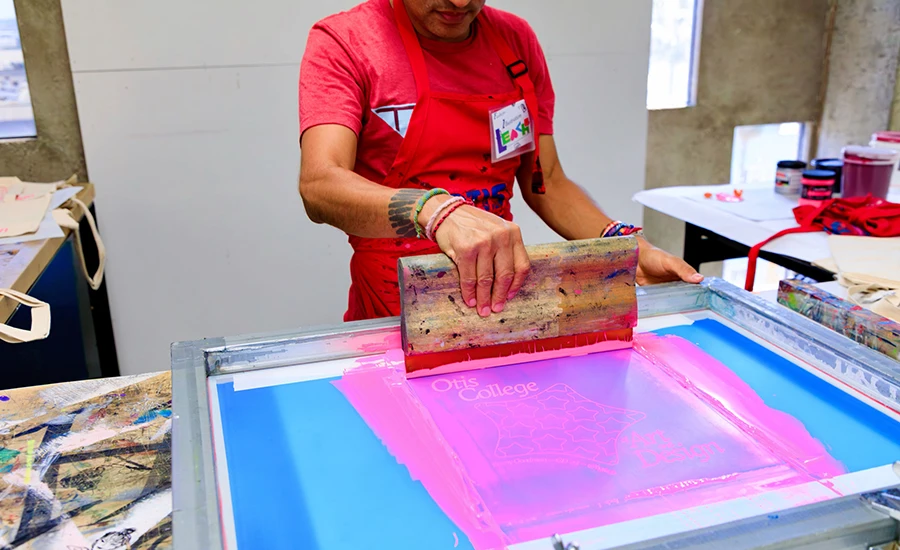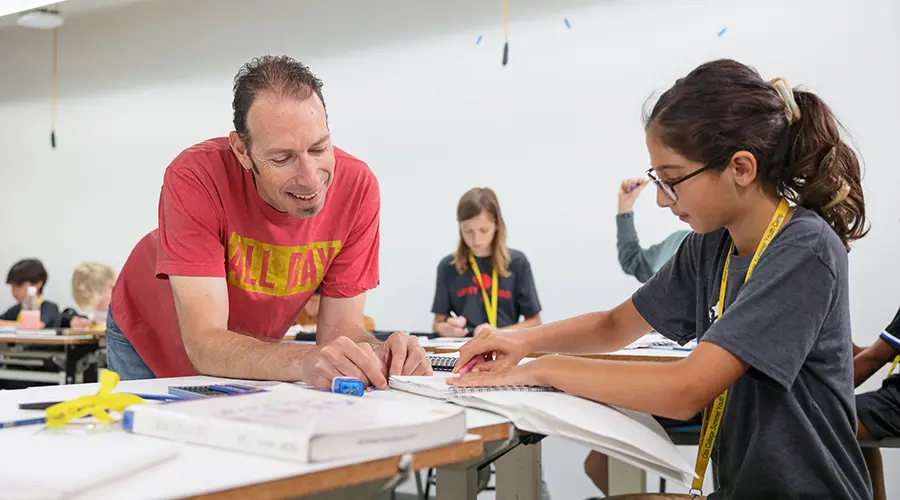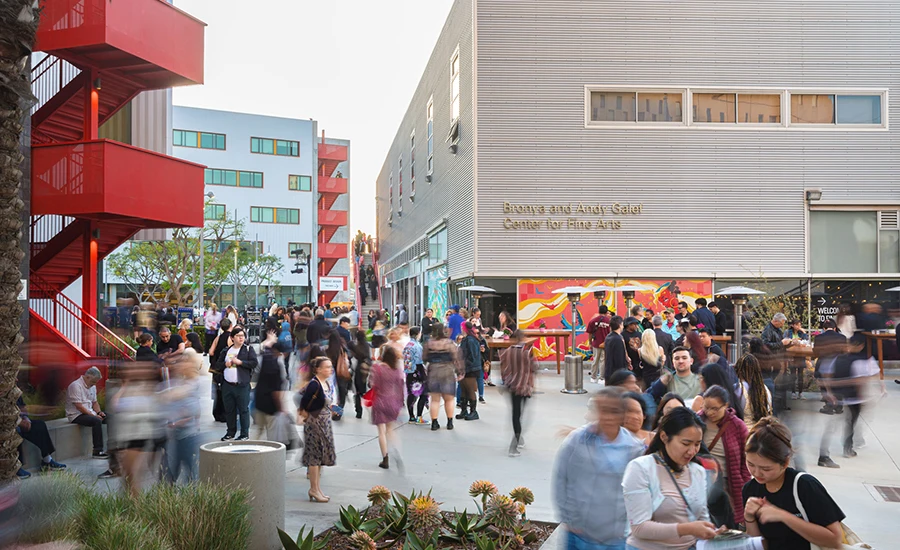Otis College Students Install Tom Van Sant Exhibition at 18th Street Art Center
Creative Action Students Spent Four Years Researching and Devising the Installation for Otis Alum Van Sant’s Groundbreaking Work
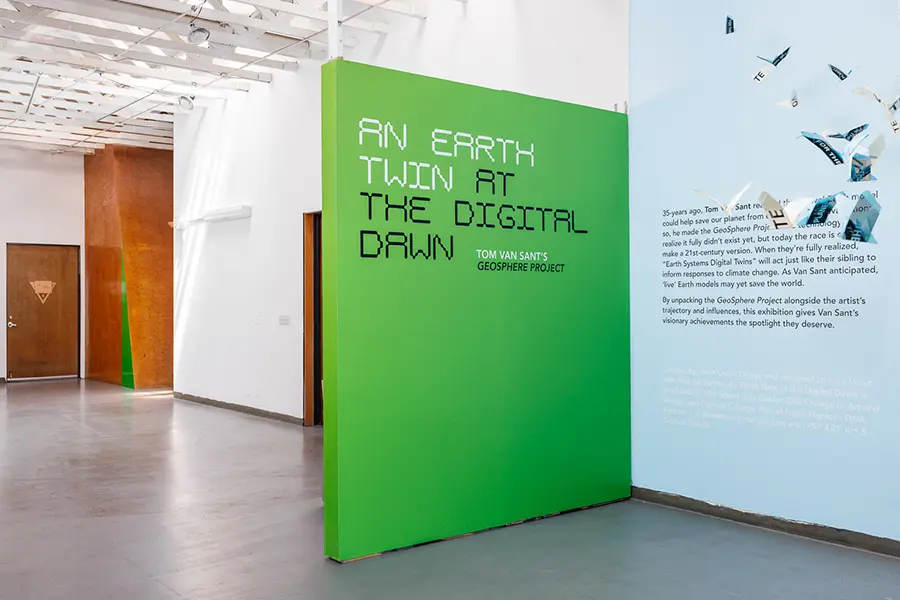
It was the ultimate twist of irony: While undergoing treatment for potential blindness in 1988, Tom Van Sant (’57 MFA Fine Arts) received the vision for his most ambitious work. A sculptor and conceptual artist who revolutionized modern kite-making—including the quarter-mile-long Jacob’s Ladder capable of lifting 2,000 pounds—Van Sant was about to push the boundaries of art and technology even further.
The GeoSphere Project would become the first cloudless, high-resolution satellite composite of Earth and a predecessor to Google Earth. It pioneered what we now call “digital twin” technology: creating virtual replicas to understand real-world systems. Van Sant’s story embodies the essence of artistic vision—seeing beyond physical limitations to imagine and accomplish what others deem impossible.
Now on view at Santa Monica’s 18th Street Arts Center through February 1, 2025, An Earth Twin at the Digital Dawn celebrates Van Sant’s groundbreaking project (Van Sant died in 2023). Part of Santa Monica’s DNA Festival, it is presented in conjunction with PST ART: Art & Science Collide, an initiative of The Getty bringing together more than 800 artists across 70+ institutions, addressing critical contemporary issues from climate change to human-machine interaction.
Breaking New Ground
The GeoSphere Project represented an unprecedented technical achievement. Working with computer scientist Dr. Lloyd Van Warren, Van Sant undertook a $600,000 venture requiring 2,400 hours to assemble thousands of satellite images into a single composite. The result—8,640 pixels wide by 4,320 pixels high, with each equatorial pixel representing 4.6 kilometers—required 338 television sets to display at full resolution.
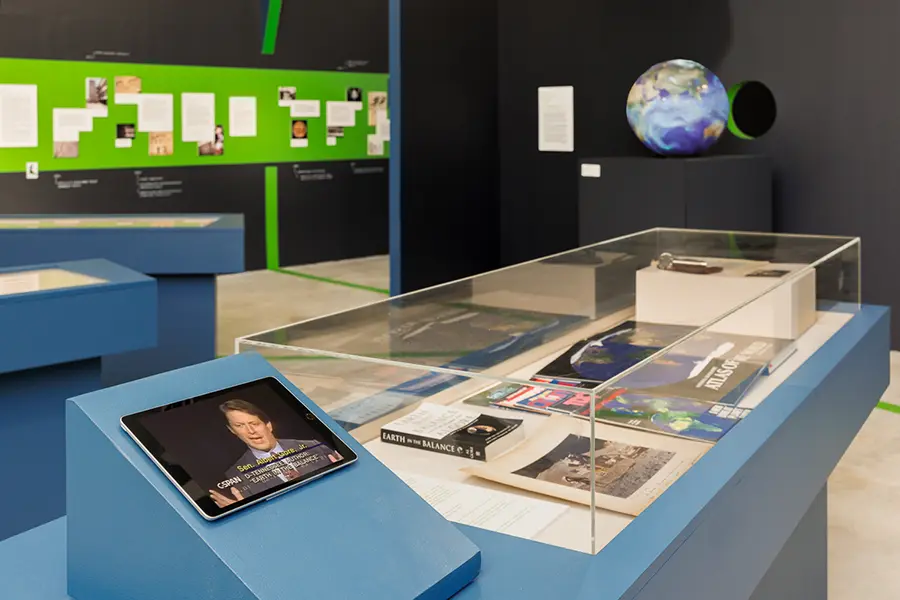
This unprecedented view revealed Earth as a single, interconnected system, transcending political boundaries. The imagery would later become central in climate change advocacy when it was featured in Al Gore’s Oscar-winning documentary feature film An Inconvenient Truth, powerfully illustrating the urgent reality of our warming planet.
The project’s roots trace back to 1980, when Van Sant began exploring communication between art and satellite technology with Reflections from Earth. In the California desert near Shadow Mountain, he arranged 90 mirrors in an eye formation, each precisely angled to create a 1.4-mile-wide image visible to the Landsat II satellite passing 600 miles overhead. This early marriage of art and aerospace technology laid the groundwork for his landmark achievement.
A New Generation Responds
Now, more than three decades later, a new generation of artists is reimagining Van Sant’s pioneering work for contemporary audiences. Over the past four years, students in Otis College’s Creative Action program, which combines art and design with community engagement, have researched Van Sant’s legacy and developed new ways to engage viewers with his vision.
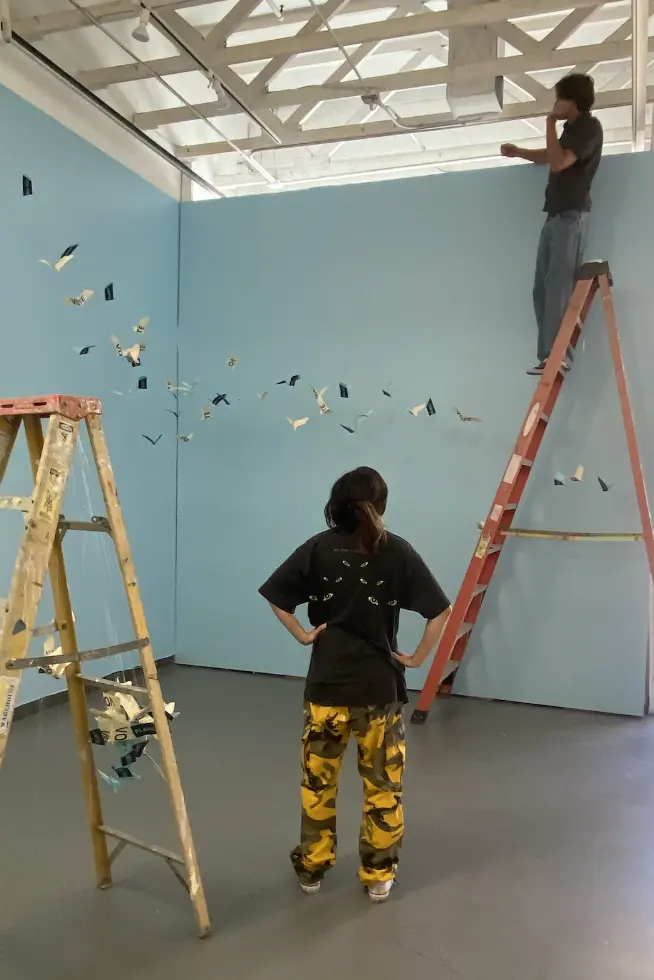
“Being introduced to Tom Van Sant’s work was incredibly inspiring,” says Jeevan Jason Southwick (’25 Illustration), one of the students involved in the project. “He was an artist that had such a wide array of work, spanning across multiple fields. What really caught my attention in a new way was how he integrated science and technology into his practice—from his kites, combining physics and sculpture, to his works utilizing satellite imagery.”
Flight and aerial perspective emerged as central themes throughout Van Sant’s career. This insight inspired innovative exhibition elements, including an entrance installation featuring birds that the Otis students created for the 18th Street Arts Center exhibition.
When students questioned whether they could showcase “a satellite like the ones used to create the GeoSphere,” they turned to augmented reality as a creative solution, notes Richard Shelton, Director of the Creative Action program at Otis. “Once we had created the satellite, we then took augmented reality and used it throughout the show on other assets that were lost or too big to include, like Tom’s kites. It was modern-day science at work.”
Shifting Perspectives
For Southwick, the GeoSphere Project demonstrated how artists can illuminate challenging concepts.
“Artists and designers have an ability to shift perspectives through their work,” he reflects. “They can take an idea and reinterpret it in a way that gets people engaged. Artists like Van Sant were able to take complex issues, digest that data and information, and retell it in a way that you can relate to.”
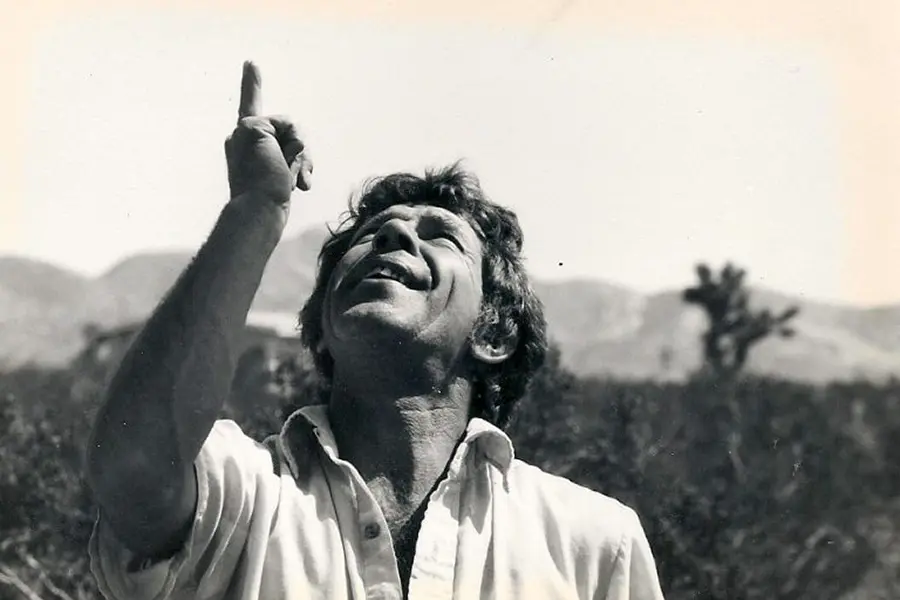
Like the borderless view of Earth that Van Sant introduced, the 18th Street Arts Center exhibition transcends boundaries between disciplines, generations, and perspectives. This convergence carries forward Van Sant’s vision of using art to help us see our world, and our role in protecting it, more clearly.
Image of Van Sant and exhibition by 18th Street Arts Center. Exhibition installation image courtesy Rich Shelton.
More information about An Earth Twin at the Digital Dawn: Tom Van Sant's GeoSphere Project, on view at 18th Street Arts Center in Santa Monica through February 1, 2025.
More information about Tom Van Sant.
Related News
